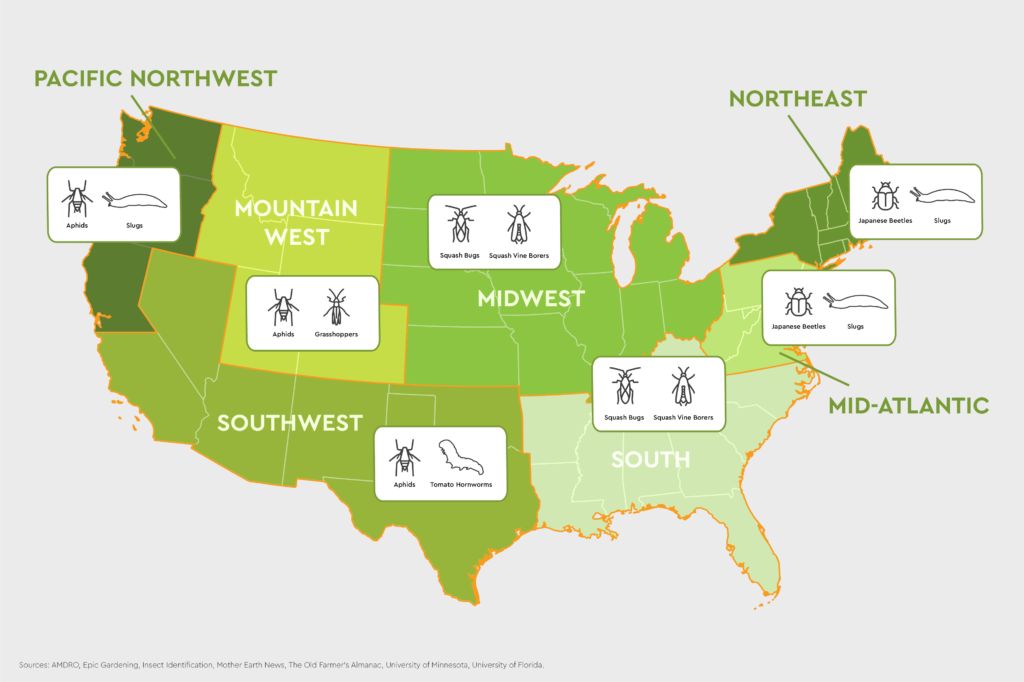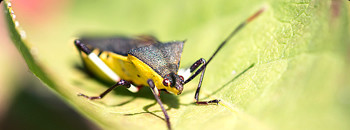Your gardening hard work provides tangible payouts, including therapeutic benefits and an aesthetically pleasing outdoor space. So, what can you do to protect this reward from unwanted pests?
When identifying and treating garden pests, it’s important to note your region may be more susceptible to certain pests than others. An integrated pest management (IPM) approach will help you find the combination of solutions to confidently control unwanted garden guests. Just remember: 1) Find, 2) Solve and 3) Prevent.
When following this approach, it’s important to read the label directions to choose the right products and use them correctly. Your local garden center or university extension service can also help if you’re having trouble identifying a pest in your yard.
Here are the pests you should be on the lookout for this summer:
- Japanese Beetles: Known for skeletonizing leaves and chewing flowers, these beetles can effect hundreds of plant types, making them a bigger threat than most. You’ll notice them by their metallic blue-green heads, copper backs, tan wings or small white hairs creeping around your flower bed.
- Slugs: Slugs will eat leaves and vegetables while leaving behind slime that can kill plants. Most garden slugs are gray to dark brown,about one-inch long, and tend to hide in dark, damp places.
- Squash Bugs: These pests damage plants in the cucurbit family and inject a toxin into the plant that suck the sap out, causing leaves to wilt and spot. Squash bugs are fairly large with orange stripes on their abdomen.
- Squash Vine Borers: Squash vine borers feed on the material inside the stems of plants, and if caught early, can be manually removed. Insecticides are an effective treatment if applied at the time they are hatching, so keep an eye out for these small, brown eggs.
- Aphids: Aphids target inside and outside of plants by feeding on the sap of leaves, leaving behind a sticky residue which causes mold growth and disease. These pests are tiny, often nearly invisible to the naked eye.
- Grasshoppers: Grasshoppers eat approximately 50 percent of their weight each day in leaves and stems, leaving plants unable to grow. For the western U.S., grasshoppers consume up to 25 percent of the available forage.
- Tomato Hornworms: While devouring flowers, tomato hornworms can also cause defoliation and scarring on fruit surfaces. They can be up to five inches long and are pale green while in the caterpillar larvae stage. They come from the mottled brown-gray moth.


